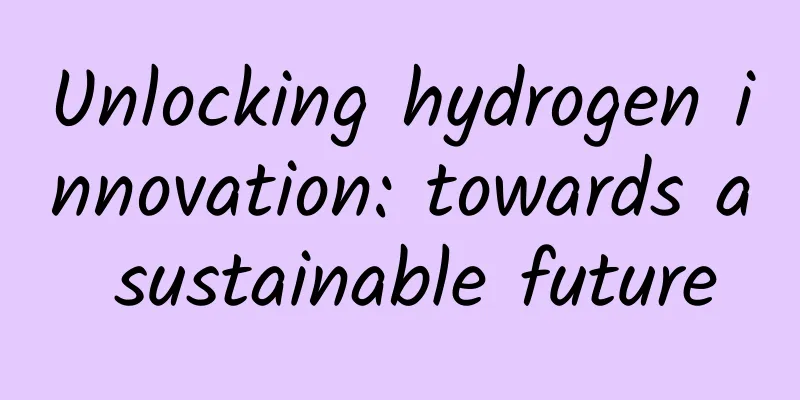|
Hydrogen energy innovation will set off a green revolution. Once marginalized, hydrogen is now coming into the spotlight as a versatile clean energy carrier. From transportation to industrial processes, hydrogen energy has the transformative potential to be a reality across a wide range of sectors. As we grapple with the consequences of carbon emissions and climate change, hydrogen offers a viable solution for decarbonizing our energy systems and ushering in a new era of sustainable development. Low-carbon hydrogen is more than just a technological advancement; it marks a profound paradigm shift in the way we understand and use energy. Once existing in the shadow of traditional fuels, low-carbon hydrogen is now emerging as a transformative force at the forefront of our efforts to combat climate change. This versatile and clean energy carrier has the potential to revolutionize multiple sectors and usher in a new era of sustainable, environmentally responsible development. A paradigm shift in green energyUnlike electrons, which can be transmitted over long distances via copper-core hard cables, hydrogen is a molecule that can be embedded in a variety of material forms (gas, liquid and solid), which makes clean, renewable energy more flexible in meeting our daily needs. It is a renewable energy source that does not need to rely on cable transmission. Using hydrogen in this way means that carbon emissions can be minimized as much as possible, which is why hydrogen is called "green" energy. In the field of transportation, traditional fuels cause serious air pollution and greenhouse gas emissions, but hydrogen changes this situation. Hydrogen fuel cell vehicles provide a zero-emission travel option because the only byproduct of the electrochemical reaction of hydrogen and oxygen is water vapor. Therefore, it can solve the air quality problem in urban areas and reduce the overall carbon footprint of the transportation sector. Hydrogen provides a viable and scalable solution to reduce the environmental impact of the global transportation system by powering buses, trucks, shipping and air transport. Improving the efficiency, durability and affordability of fuel cells in different applications such as transportation, heating and power generation will also expand the scope of hydrogen's use.Transportation is just one area where green hydrogen can be beneficial. When we capture carbon emissions, we are dealing with an entire energy system that processes and burns fossil fuels. Now you can combine the captured carbon with green hydrogen and reverse the process by creating a carbon fuel that can be recycled or recycled, thus preventing the continued emission of carbon dioxide into the earth's atmosphere. Beyond transportation, hydrogen’s impact extends to industrial processes, which are often the main source of carbon emissions. Decarbonization of industries such as steel and cement production is a prime example of hydrogen’s versatility. Steelmakers can significantly reduce carbon emissions by applying a process called hydrogen direct reduction instead of traditional carbon-intensive methods. Tailoring hydrogen applications to the specific needs of industries such as steel production, aviation and maritime requires innovative approaches such as dedicated fuel cell systems and optimized combustion technologies. Leading to a carbon-neutral futureNEOM, an emerging development and ambitious infrastructure project in northwestern Saudi Arabia, is proving the possibility of large-scale green hydrogen production. The region is rich in solar and wind resources and is well suited for renewable energy projects. NEOM’s strategy coincides with the goals of the green hydrogen economy, so NEOM Green Hydrogen Company and industry partners are building the world’s largest electrolysis hydrogen plant powered by renewable energy. ENOWA, NEOM’s subsidiary in the fields of sustainable energy, water and hydrogen, plays a central role in shaping the region’s energy landscape. Together, these companies and their partners hope to redefine modern, eco-conscious cities. Innovative technologies are key to achieving this vision and driving the transition to sustainable hydrogen production. Advances in electrolysis technology, especially the development of efficient and cost-effective electrolyzers, play a central role. Advances in electrolyzer technology that uses renewable electricity to separate water are critical, and key areas include efficient materials, low-cost manufacturing, and integration with variable renewable energy sources such as solar and wind. Accelerating the application of hydrogen energyDeveloping new materials to store large amounts of hydrogen at low cost and without significant energy loss is critical to promoting the development of the transportation industry and the long-term stability of the industry. Modifying existing hydrogen transportation pipelines, building new pipelines, and exploring alternative carriers such as organic liquid hydrides or ammonia can provide more flexible and cost-effective delivery options. In the pursuit of a sustainable and hydrogen-powered future, global collaboration and research investment play a key role in accelerating the adoption of this transformative energy source, which is why ENOWA has established the Hydrogen Innovation and Development Center in Oxagon, NEOM, and the NEOM Institute for Green Hydrogen and Synthetic Fuels Applications. NEOM aims to promote horizontal and vertical innovation in hydrogen energy technology, using its rapidly growing sectors and industries as a hub for research and development, attracting energy experts and researchers to work within it, while bringing together a variety of experts, researchers and industry leaders. The road to hydrogen integrationGlobally, hydrogen production would not have been commercialized without strong government support. Governments recognize the need for strategic planning and investment, providing incentives, regulatory frameworks and infrastructure support to drive hydrogen energy projects forward. At the same time, driven by innovation and investment, the participation of the private sector industry has further ensured the development, promotion and integration of hydrogen technology into the mainstream energy system. Infrastructure construction is a key challenge on the road to hydrogen integration. In order to be able to use hydrogen as a mainstream energy source without obstacles, we urgently need a strong network of production facilities, storage solutions and transportation systems. In addition, transportation infrastructure, including pipelines and hydrogen refueling stations, is a key component to ensure the accessibility and distribution of hydrogen in various fields. However, the versatility of hydrogen and its ability to be embedded as an energy carrier in chemicals and fuels such as ammonia, methanol, and even synthetic carbon cycle fuels such as gasoline or kerosene, opens up a whole pathway to use existing infrastructure. This adaptability shortens implementation time and provides a much cheaper way to transport renewable energy than building entirely new power lines. Trust and sustainability in the hydrogen economyEstablishing a robust and transparent system to certify the origin and environmental footprint of hydrogen is as important as fostering consumer trust and building a sustainable market. It is imperative that the value and impact of low-carbon hydrogen is no longer defined by a technology-oriented color classification system. Educating the public about the potential and impact of low-carbon hydrogen is essential for widespread adoption of the technology and attracting investment. We are on the cusp of a hydrogen revolution, and a sustainable future is just around the corner. Hydrogen innovation is not a paradigm shift that requires countless technologists to "invent the future", but a straightforward technological advancement, just like solar technology. The only paradigm shift hydrogen brings is its potential to reshape the way we obtain and consume energy. Ben Queisser Head of Technology and Innovation at NEOM |










